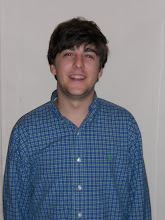Sunday, April 25, 2010
3D Shoot
Monday, April 19, 2010
Mystery Workshop: Forts are the shit
Monday, April 12, 2010
Rough Theatre
Monday, April 5, 2010
Monday, March 29, 2010
Dylan Putting "Plagiarism" In Its Place Via Modern Times
A debate has sprung up since the release of Modern Times discussing whether Dylan should be found guilty for plagiarism on account of lyrical similarities (sometimes exact phrases according to Peter Greens’ translations of Ovid’s Letters from the Black Sea) to the Roman poet Ovid’s poems and the Civil-War era poet Henry Timrod. Along with these accusations, many have wondered how Dylan got away without giving credit to many blues artists he borrowed lyrics and musical arrangements from including Muddy Waters on “Rollin’ And Tumblin’” and Memphis Minnie on “Thunder On The Mountain.” No lawsuits have been filed and Sony has not budged on their rock-hard support of Dylan’s methods. Robert Politio of the Poetry Foundation stood up for Dylan against allegations of plagiarism stating that people were confusing “art with a term paper.” Artists from the likes of William Shakespeare to Roy Lichtenstein have always used and adapted ideas from their predecessors. Folk music in general is a form of art that is built upon using other musicians’ ideas and creating new ideas with them. Woody Gunthry, one of the most famous and well renowned folk musicians, as well as, Dylan’s biggest idol, once said, "That guy stole that from me, but I steal from everybody.” Stealing or borrowing musical ideas from other musicians is just the folk tradition. In a 2004 interview with Rob Hillburn of the Los Angeles Times Dylan said, “That's the folk music tradition. You use what's been handed down.” Ever since Dylan’s beginnings as a young man in New York City he has followed folk music’s tradition of always using and reusing other musicians ideas and sounds to create new ideas and sounds. After completing his second album, Free Wheelin’ Bob Dylan, he released one of his most famous and revered songs “Blowin’ in the Wind,” a piece he created by adapting a Negro spiritual song "No More Auction Block,” and an old Scottish folk song. Dylan’s piece “Blowin’ in the Wind” was then covered by everyone from Dolly Parton to Stevie Wonder. In this modern age, music has become an industry and genres have transformed into molds in which artists must conform. The popular music of today has come a long way from the traditions of folk, blues, and jazz where musical ideas were shared and built upon like Lego blocks. If a musician takes an idea from another musician in today’s society then a lawsuit is bound to ensue (i.e. Rolling Stones “The Last Time” vs. The Verve “Bittersweet Symphony”). Dylan uses Modern Times to show us how absurd it is to be fighting over music that is being shared (i.e. Napster vs. Metalica, etc.) and borrowed. “The hammer's on the table, the pitchfork's on the shelf, for the love of God, you ought to take pity on yourself (“Thunder on the Mountain”).” He is showing us that even in these modern times genuine music can still be found. The usage of Ted Croner’s photograph, “Taxi, New York at Night” (1947), for the album cover showcases his beliefs perfectly. The photo shows a 1940’s taxi passing by in fleeting overexposed lights. It shows us that even though the times have changed significantly since the 1940’s due to the accessible technologies that allow American culture to move so fast, music as an art does not have to change with the times.
